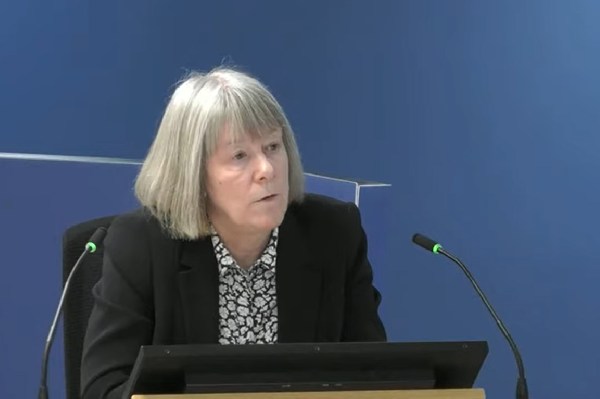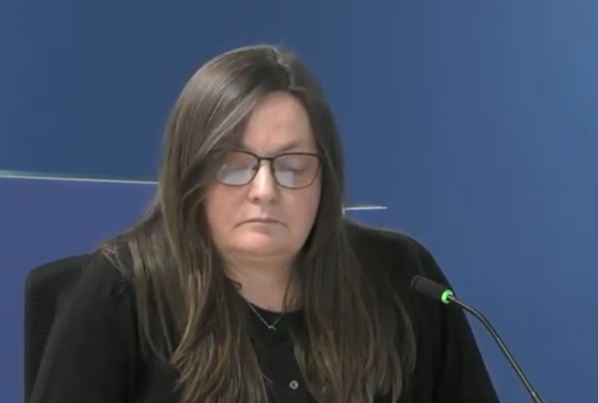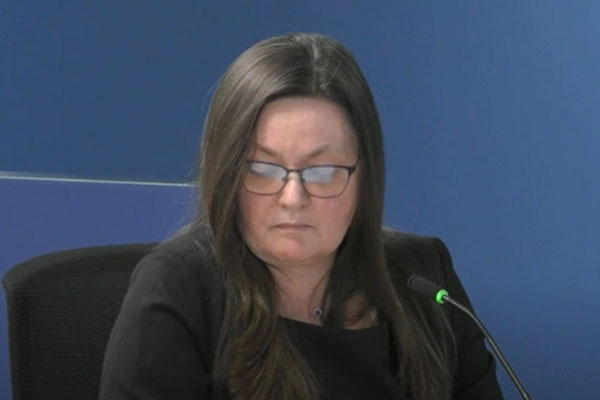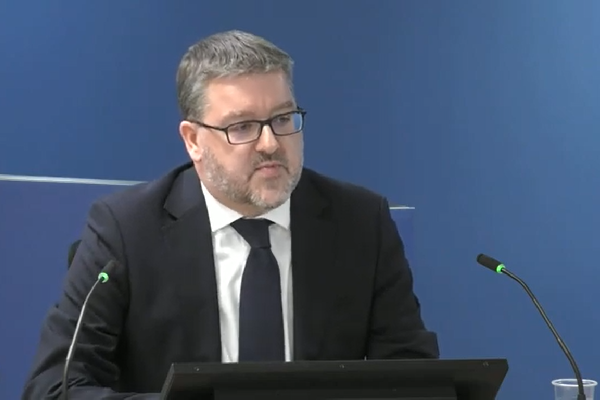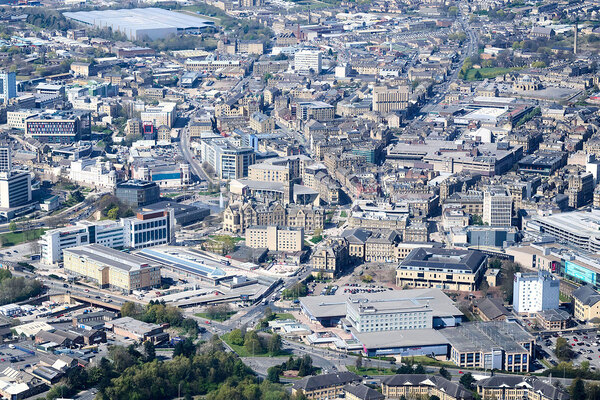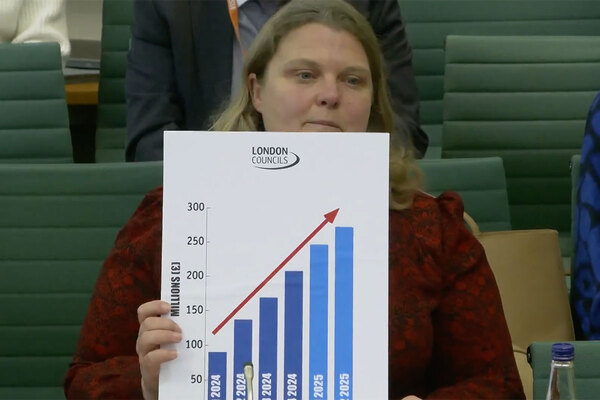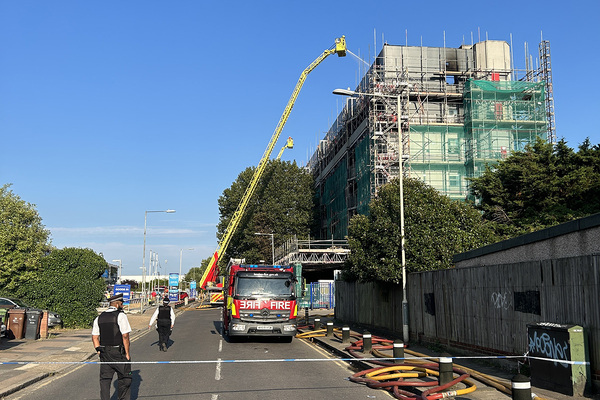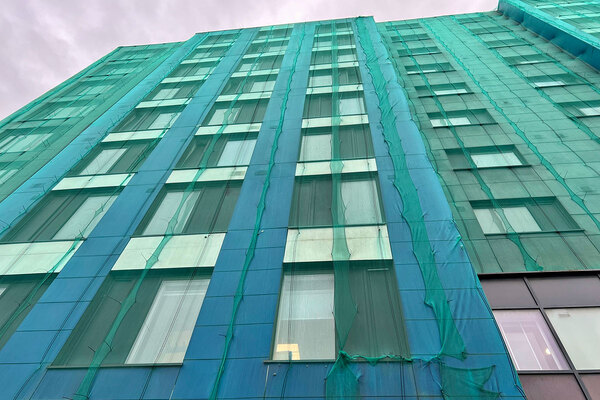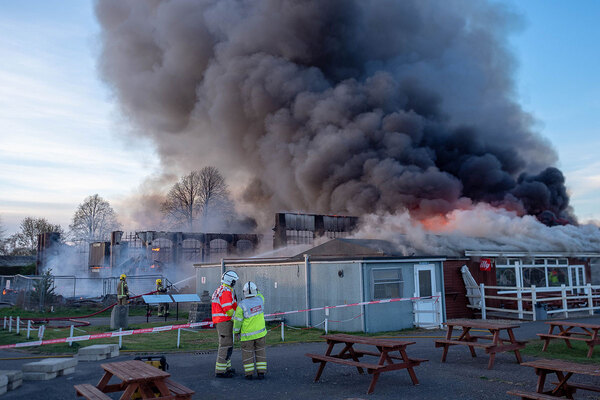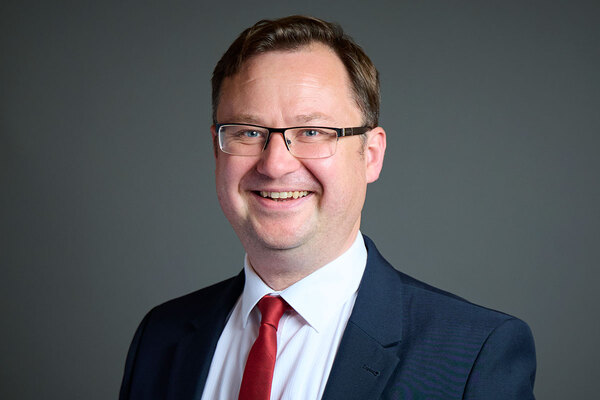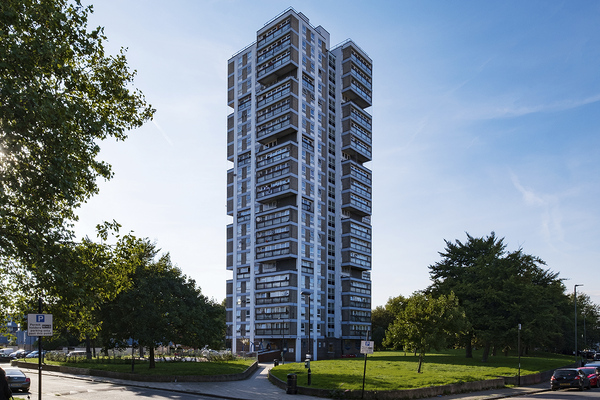BRE manager did not tell government about failed cladding tests in aftermath of Grenfell fire
A former managing director at the Building Research Establishment (BRE) did not tell an emergency meeting convened by government in the days after the Grenfell Tower fire that official tests had revealed the risk of the tower’s cladding material 16 years earlier.
However, in a tense cross-examination about the aftermath of the June 2017 fire, Dr Debbie Smith denied deliberately colluding with a government official to keep this information from ministers.
Today, the inquiry investigated a hastily arranged meeting that took place in Whitehall on 17 June 2017, three days after the devastating fire, to inform the government’s immediate response.
The meeting was chaired by Alok Sharma, who had been housing minister for less than a week, and speaking notes show that he instructed the experts present to offer their “frank advice”.
The inquiry has previously revealed that the BRE had been contracted to run a series of cladding tests for government in 2001, which included a test on aluminium composite material (ACM) – the cladding that the meeting believed to have been used on Grenfell.
This test had shown the cladding system experiencing a “catastrophic escalation” of fire, with 20-metre-high flames appearing after just five minutes.
The minutes of the 2017 meeting record that “the exact reason for the speed of the spread of the fire have yet to be determined” and note the need for “additional tests” on this type of cladding.
“Did you tell the minister… that you yourself might have a very good idea as to the reasons for the speed of the spread of the fire: namely what the BRE had witnessed in 2001 test?” asked Richard Millet, counsel to the inquiry.
“No, because that would not have been appropriate at the time, because an investigation was ongoing and that would have been pure speculation really,” said Dr Smith.
“No it wouldn’t, Dr Smith” said Mr Millett. “It wouldn’t have been speculation. It was a fact and it was a material fact to the very issue of the exact reasons for the speed of the spread of fire. The BRE had conducted an experiment on ACM cladding and it had failed spectacularly. Why not tell the minister that it had happened and the government had the records of it?”
Dr Smith replied: “As I say, it didn’t occur at the time but also you have to factor in that that research was just that. It wasn’t a complete system that was tested.”
She added that the system tested in 2001 may have been different to the one used on Grenfell Tower. “There were too many unknowns, is basically what I’m saying,” she added.
Notes of the meeting show that ministers wanted the assembled group of experts to explain whether the fire was likely to be “an isolated incident” or if there was a risk to other buildings.
Dr Smith has previously told the inquiry that she was aware that government guidance permitted the use of such cladding until 2006, as it could obtain a ‘Class 0’ rating, which was the minimum standard at the time.
“Was it not relevant exactly in answer to the question [of the number of affected buildings] for the minister to know that up until 2006 there was a real possibility of a legacy of buildings which had ACM… on them because the regulations at that stage permitted them?” asked Mr Millett.
“OK, but I mean what was being discussed was about finding facts and knowing exactly the numbers and where they were,” she replied.
“It would have been a direct answer to a direct question: ‘was Grenfell a one-off?’” said Mr Millett. “Why didn’t you say ‘it can’t have been a one-off, because the regulations were only tightened in 2006’?”
“Again, well, it’s not something that occurred to me at the time given the nature of the discussions that were going on in that meeting,” she replied.
Staff at the BRE had also been warned on at least two occasions since 2014 that ACM remained in widespread use even after 2006, because the ‘Class 0’ standard had never been withdrawn and passages in guidance intended to ban its use did not go far enough. Throughout her evidence, Dr Smith has strenuously denied being aware of these warnings personally.
The inquiry also revealed today that a day before the meeting, Brian Martin, the civil servant responsible for building regulations guidance and a former BRE employee, had emailed Dr Smith and her colleagues asking them to help “rebut” an article in The Times which claimed that official guidance permitted the use of the dangerous cladding.
He included a pre-prepared script that set out the government’s line on its interpretation of the official guidance, and said that he had been “asked if an independent expert would be willing to say this (or something similar) in public”.
“Did you think it appropriate that a government official was approaching you with a pre-prepared script to be presented as though it were the independent view of an independent expert in support of the government’s interpretation of its guidance?” asked Mr Millett.
“It’s not appropriate, no,” Dr Smith replied.
The inquiry has previously seen that Mr Martin sent an identical email to other experts at the National House Building Council (NHBC).
The chain of emails show that Mr Martin retracted the request to the BRE because he had “agreed with the Met Police” that the independent expert “could not be the BRE”, which was providing expert advice to the police investigation.
Dr Smith, who was travelling back from France on a Eurostar to attend the meeting the next day, then suggested that Mr Martin phone her.
Mr Martin was also aware of the 2001 tests and the belief in the industry that the official guidance permitted the use of ACM.
“Did you reach an agreement with Brian Martin before this meeting that you will speak only when spoken to and give away the barest minimum of information to the minister?” asked Mr Millett.
“No, absolutely not,” replied Dr Smith.
“Did you reach an agreement with him that you wouldn’t mention the 2001 tests?” asked Mr Millett.
“Absolutely not,” replied Dr Smith.
Following the 17 June meeting, the government wrote to local authorities and housing associations claiming that “for the avoidance of doubt” the core of an ACM panel was banned by official guidance, due to the words “filler material” in a passage in the official guidance.
This was the interpretation that Mr Martin and the BRE had been asked to clarify from 2014 onwards, but had not done.
Minutes of the meeting show that it was also attended by long-time government advisor Sir Ken Knight and consultant Colin Todd, who had led work to produce official guidance endorsing the ‘stay put’ policy in 2011.
Earlier, Dr Smith had been asked about the BRE’s commercial relationship with insulation manufacturer Kingspan, which paid for a series of large-scale tests on cladding systems featuring its combustible insulation from 2005 onwards.
The inquiry was shown an email in which Dr Smith said there was “no reason why” the BRE could not “sit down” with the manufacturer and “work with them to design a progressive programme of testing” on their products.
The email was sent in 2008, when Kingspan was seeking to use the large-scale test passes to justify the use of its combination in a wide range of cladding systems differing from those tested.
Mr Millett said this was “completely at odds” with the policy of the BRE regarding advice they gave to clients. Dr Smith replied that this was “not what was happening at BRE”.
“Some people reading that email might think that here was the BRE cosying up to its clients for financial gain. Do you have a comment on that?” asked Mr Millett.
“No, I don’t believe that to be the case,” she said.
Dr Smith was asked at the end of her evidence what she would have done differently in her time at the BRE. “I think I would like to further reflect on that rather than answer off the cuff, if I may,” she said. “It has been quite a tiring and a long process… so I would like to reflect on that and maybe make a submission later.”
“I don’t think a submission later will answer my question,” said Mr Millett. “I would like to have your reflections, even though they might be off the cuff, on oath, in public, now please.”
“Well, I really, I haven’t prepared an answer to that and I feel exhausted by this process so I think I can’t answer you right now,” she said.
Later Anthony Burd (pictured above), the former head of technical policy in the building regulations and standards division in the department now known as the Department for Levelling Up, Housing and Communities (DLUHC), began his evidence.
He was asked about a report provided to the department by the BRE in 1999 into a fire that happened at Garnock Court, a tower block in Irvine, Scotland, earlier that year.
As the inquiry has previously heard, the BRE’s copy of the report delivered to North Ayrshire Council differed from the one provided to the government, with all references to Class 0 standard omitted from the latter.
“Can you think of any reason why the BRE would not set those observations or findings out in the clearest terms to the department?” asked Mr Millett.
Mr Burd replied: “No, I cannot. And, if I may, given the importance… it is imperative that we should be receiving the fullest information about the fires that are being investigated.”
Asked if the inquiry could “safely conclude” that the removal of the passages must have been done by either someone at the BRE or within the government, Mr Burd accepted that it “can’t have been anyone else”.
After the Garnock Court fire, a select committee raised concerns about the use of the Class 0 standard, following evidence that it could be obtained by combustible products.
The committee recommended the replacement of the standard with large-scale tests. But this was not done, with the government opting instead to introduce large-scale testing as an alternative route to compliance.
“Do you know who made the decision to ignore or refuse to follow the select committee’s recommendations?” asked Mr Millett.
“Ultimately, the responsibility resides with ministers,” said Mr Burd.
“Well, that’s certainly true. But ministers act on advice. Do you know who ultimately gave the advice that the select committee’s recommendation should not be followed?” asked Mr Millett.
Mr Burd said the advice may have been given by Tony Edwards, who was the principal fire safety professional at the time.
Asked if not following the committee’s recommendation in this regard was a “conscious decision”, Mr Burd said: “By virtue of it [the Class 0 standard] still remaining [in the guidance], then yes.”
The inquiry continues with further evidence from Mr Burd on Monday.
Sign up for our weekly Grenfell Inquiry newsletter
Each week we send out a newsletter rounding up the key news from the Grenfell Inquiry, along with the headlines from the week
Already have an account? Click here to manage your newsletters
